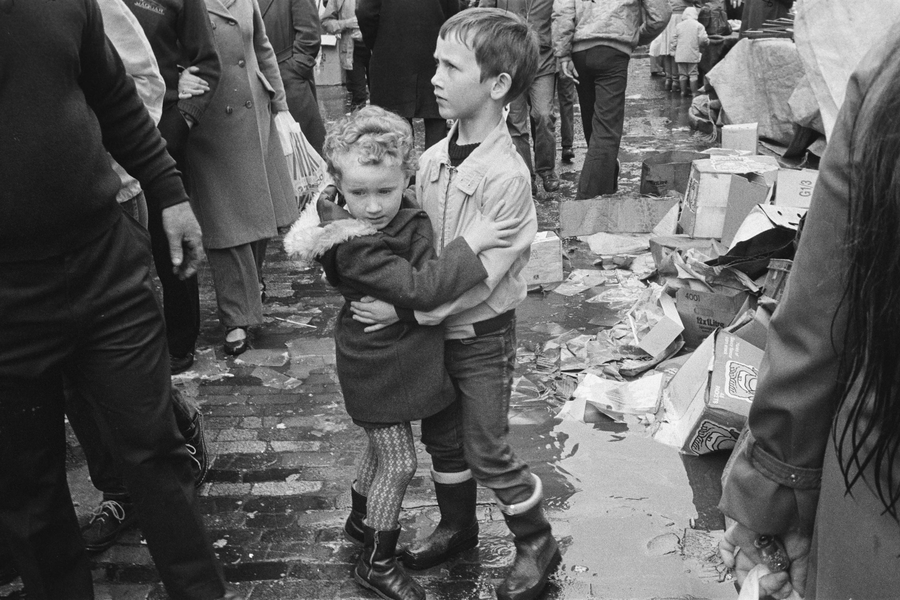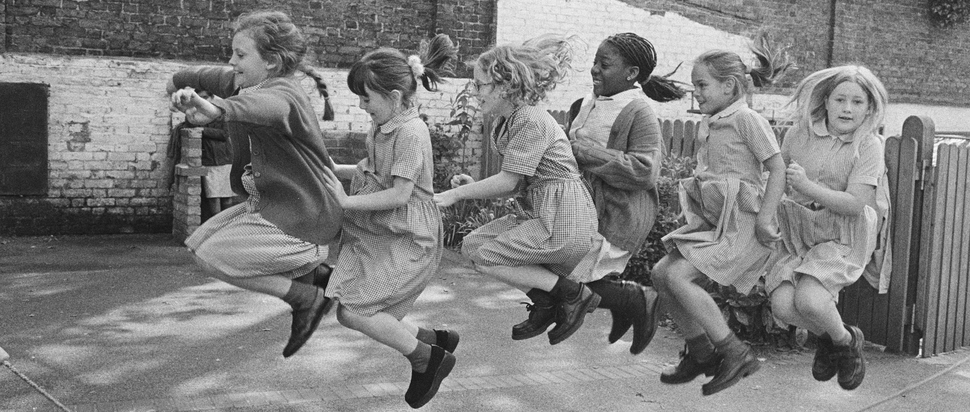Edinburgh Art Festival: Markéta Luskačová at Stills
One writer explores the work of Prague-born, UK-based photographer Markéta Luskačová and her enduring photographs of children from the 1960s to the present day
Markéta Luskačová began her photography career in the mid-20th century and since then, image-making has transformed and developed at quite a pace. The time and care it takes to create an image through analogue photography and printing processes has been overtaken by digital image-making. Digital images are instant, made up of pixels rather than physical material. They can be so easily created and manipulated, while analogue photography by nature is more deeply connected to the identity of its maker.
Instagram, TikTok, Twitter, television, billboards: we’re lost in all this digital imagery, confronted each day with life, death, laughter, fear. You can watch a make-up routine, then a war, then a shopping haul, then a wedding, then a storytime about murder. If you do go on your phone before bed (despite the advice not to), all these earthly emotions compound into that hour before sleep. You switch off your phone and try to fall into your dreams – but they learn all these feelings and feed them back to you like a thick dessert.
Images are not so much about sight anymore as ingestion, gorging on anything visual: it’s all served up on a plate. Many TikTok videos are now presented in a split screen, with the video game Subway Surfers playing below the actual content, to keep your attention. Algorithms try to curate your diet of images, but they also obscure, feeding you toxic content of true crime or triggering storytimes that your mind can’t help but sickeningly engage with. It is definitely known and understood that this engagement with images is not healthy – even if it is addictive and even fun. But we can’t undo progress, even if we realise it wasn’t for the best. What we can do, though, is ingest images and photographs more slowly and more mindfully, learning and taking heed from institutions like Stills and photographers like Luskačová.

Two children in the rain, Cheshire Street, London by Markéta Luskačová. Image courtesy of the artist.
What is most evident about the exhibition upon arrival is the peacefulness of the space; soft white walls compliment grey gradients within the black and white, hand-printed analogue photographs. Children rest together on a train seat; another child lies asleep, yielding to his mother’s arms. In one photograph, children pause together in prayer, eyes sealed shut in a moment of tranquillity and hope. Humanity is evident in innocent smiles, in the stripes of summer dresses, in the way two little arms clasp each other amidst dark rain.
Girls jumping over a rope in the school playground, London (2000) shows six girls suspended in the air above their skipping rope. Although the photograph captures movement, the locating of the girls in the exact centre of the image arrests this motion, creating an effect of stillness. These mid-movement photographs actually end up inviting us to pause, sit down, sit still and arrest our own movement, the fast-pace of contemporary life and its constant consumption of images. More details begin to appear if you sit quietly with Luskačová’s works: the individual dapples of light on the ground, the snaking curvature of the rope hiding at the bottom of the image, or the dishevelled curls, plaits and ponytails of the girls’ hair.
Luskačová does not shy away from strife, though. Pain is evident too in solemn, weighted eyes, when multiple women and children crowd into one bedroom to sleep in Early Morning at Chiswick Women’s Aid, London (1977). But even the pain is considered – muted here by the cosy white duvets that flood most of the image. The weariness and peace of the sleeping women invites careful contemplation: we are let into their private moment of crisis and rest, asked by the photographer to meditate discreetly upon their suffering. Luskačová has worked through difficult eras of social and political unrest, particularly through the censorship and danger of Soviet communism, but her practice always reacts with sensitive humanity, rather than any voyeuristic celebration of strife. She noted in her talk at Stills in August that instead of photographing the tanks rolling into Prague in 1968, she photographed ‘the people on the streets’ – focusing on the poignant and touching humanity that fills communities facing turmoil.
Stills and Luskačová seem to have rescued the image, in a way. What Luskačová provides is gentleness and humanity in her moments of pause, and what Stills provides is agency. When you ingest digital images online, it never really feels like choice is involved: the algorithm runs wild, and you’re too addicted to choose any of it anyway. The choice to run down to Cockburn Street, to engage in Edinburgh Art Festival – in your city and its cultural gifts – is what can give us agency and tenderness against this terrifying age of the digital image.
Markéta Luskačová, Stills Gallery, until 7 Oct, Tue-Sat, 11am-5pm, free entry
This article was commissioned as part of Edinburgh Art Festival's Emerging Writers programme
